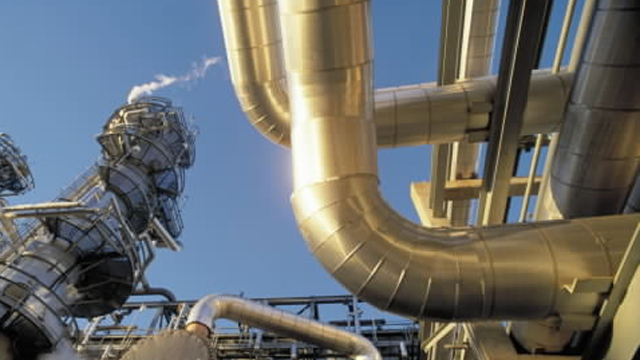Hydrocracking
Upgrading heavy feedstocks into valuable products by hydrocracking processes calls for highly reliable equipment,delivering maximum uptime while operating in a demanding environment. No matter the process – fixed bed, ebullated bed or slurry hydrocracking, Alfa Laval heat exchangers in high-grade material minimize the risk of corrosion while spiral exchangers maximize uptime by minimizing fouling.
Optimizing refinery hydrocracking processes
Whether fixed bed, ebullated bed or slurry hydrocracking, Alfa Laval has the expertise, broad equipment portfolio and services to help refineries boost energy efficiency, reduce maintenance, increase production and improve profitability.
Increasing reliability
Process equipment in the reactor section of the hydrocracker process operates under extreme high-temperature, high-pressure conditions in the presence of hydrogen at high partial pressure. It is therefore subject to conditions where there is risk of high-temperature hydrogen attack (HTHA) or hydrogen-induced cracking (HIC) of carbon steel material. This can lead to the collapse of the metallic structure and, in the worst-case scenario, the risk of explosion.
Heat exchangers installed here must therefore be highly reliable and be designed with high mechanical integrity – not only to maximize process uptime and availability, but also to ensure process safety. Well-proven for high quality and reliability, Alfa Laval OLMI shell-and-tube exchangers and air coolers are excellent choices for use in hydrocracking processes. A special closure design (threaded plug type) is available to maximize sealing safety and make maintenance quick and easy. Proper design and material selection help minimize the risk of tube sheet failures and tube bundle buckling. Moreover, high-quality, crevice-free full penetration or internal bore welding minimizes the risk of cracks in tube-to-tube-sheet welds. In addition, all mechanical designs are verified by finite element analysis.
Maximizing corrosion resistance in refinery hydrocracking
The effluent vapour from the hydrocracker reactors can contain several corrosive compounds, such as wet carbon dioxide, hydrogen sulfide and ammonium bisulfide. Proper material selection is required to minimize the risk of corrosion in the process equipment handling this media. Alfa Laval heat exchangers made of high-grade material ensure the longest possible equipment service lifetime.
Mitigating fouling
Due to the high conversion rates in ebullated bed and slurry hydrocracking, the residue from the vacuum fractionating column is very unstable and the precipitation of asphaltenes can cause severe fouling and plugging problems when using traditional shell-and-tube heat exchangers.
The higher the conversion rate of the plant, the more unstable the residue becomes and the more severe the fouling problems in the heat exchangers. This means that the plant conversion rate and on-stream availability can be limited due to fouling of the heat exchangers. To minimize fouling problems, quick and efficient cooling of the residue and minimal hold-up time in the exchangers is required. In addition, dead zones with stagnant flow, or even maldistribution, that create heat transfer channels with low velocities must be avoided.
Alfa Laval spiral heat exchangers are the optimal technology for this type of service. High efficiency cooling and low hold-up time in combination with a single channel flow provide perfect control of channel velocities, no dead zones and minimized fouling tendency in the exchangers. This makes it possible to ensure a maximum conversion rate at the plant while minimizing the risk of exchanger plugging, thereby lowering maintenance requirements. If cleaning is needed, downtime is drastically reduced due to easy access to the heat transfer channels for mechanical cleaning.
Increasing energy efficiency in refinery hydrocracking
Reaction section
The main heat recovery positions in the hydrocracking processes are the combined feed effluent interchangers in the reaction section. To minimize refinery operating costs, heat exchangers used here need to be designed for the highest possible reliability and corrosion resistance as well as optimized for best energy efficiency.
As a member of the Heat Transfer Research Institute, Alfa Laval can provide both the thermal and hydraulic ratings for optimal heat recovery and design.
Product recovery section
Energy recovery can also be optimized for preheating the feed to the fractionators and for cooling overhead vapour, run-downs and pump-arounds. Normally, the residue from the residue hydrocracker vacuum columns is used to generate high-pressure steam. However, with a low-fouling Alfa Laval spiral heat exchanger, energy can be recovered more efficiently to preheat the feed, which generates greater value to the refinery.
Proven technology for refinery hydrocracking processes
Alfa Laval has several OLMI shell-and-tube heat exchangers and air coolers installed in the reactor section of hydrocracking plants around the world. In addition, Alfa Laval Compabloc and spiral heat exchangers deliver highly efficient energy recovery – even for high fouling applications such as steam generation and residue cooling/feed preheating services.

